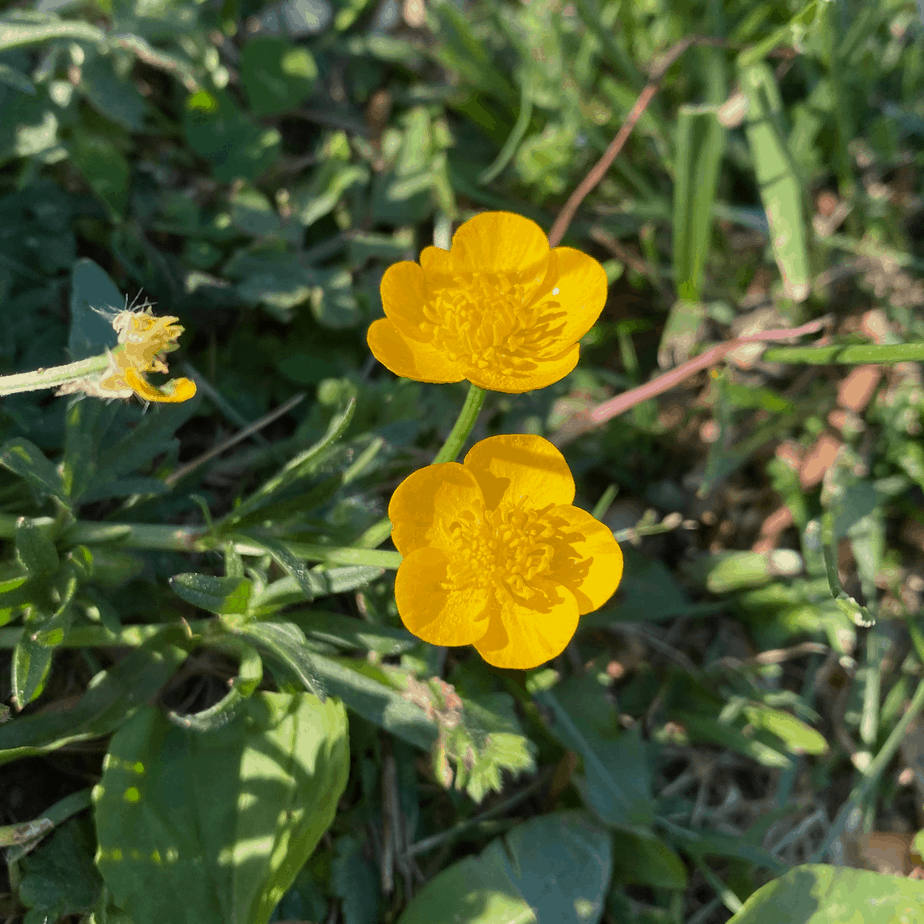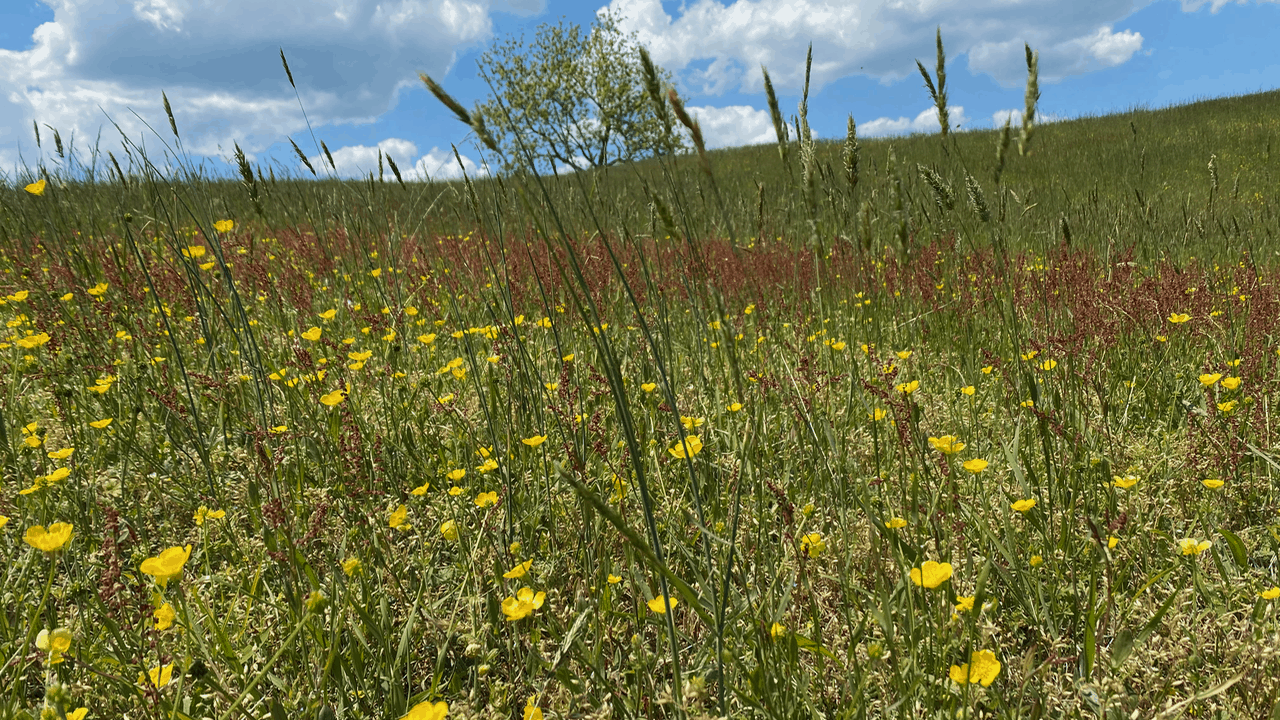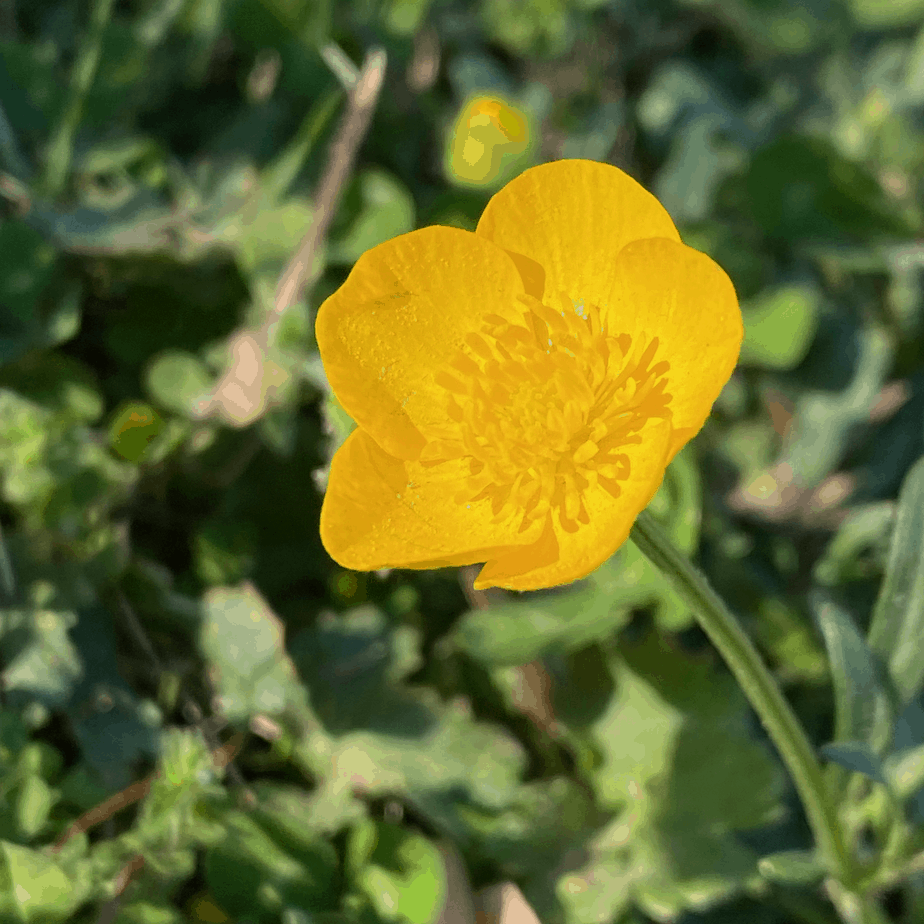Buttercups are a pretty little yellow flower that pops up every spring. They are in yards before the grass is cut. These little yellow flowers are also frequently in open fields and meadows. There are several species of Buttercups. The ones in these photos are Ranunculus bulbosus. Read more to find out some interesting facts about these pretty yellow plants.
Characteristics of Buttercups
Here are some interesting physical characteristics of Buttercups, also known as St. Anthony’s Turnip. The white bulb at the junction of the stem and roots resembles a turnip.
First, they are a perennial plant that grows to about a foot tall.
Second, they have simple or compound leaves that are alternate on the stem. Leaf edges are not smooth.
Finally, flowers have 5-7 petals. Flowers are always at the end of the stems.
Buttercups are Poisonous
The entire buttercup plant is poisonous. The flowers have the highest concentration of the toxin. They contain Ranunculin, which is a glycoside. When the plant is crushed, an enzyme turns Ranunculin into a bitter irritating yellow oil called Protoanemonin. Mostly grazing animals eat them, then sometimes they suffer paralysis. People usually don’t eat them because they taste bad. If a person eats a lot of buttercup, they could suffer stomach upset. Dried buttercups lose their poison, however they are really not considered edible.
Do you like Butter?
Ever put a buttercup under your chin to see if you like butter? There probably isn’t any merit to that, but it is fun. The flowers of the buttercup are layered. The outer layer of the petal reflects yellow light almost as much as glass reflects light. Interestingly the reflection has to do with color frequencies. I talked about colors in this post about sunsets. Carotenoid pigments in the petals absorb blue-green light, and yellow light is reflected by flat cells that act similarly to glass. The result is a strong yellow color and reflection. If you want to learn even more about the chemical and structural process, check out this article.


